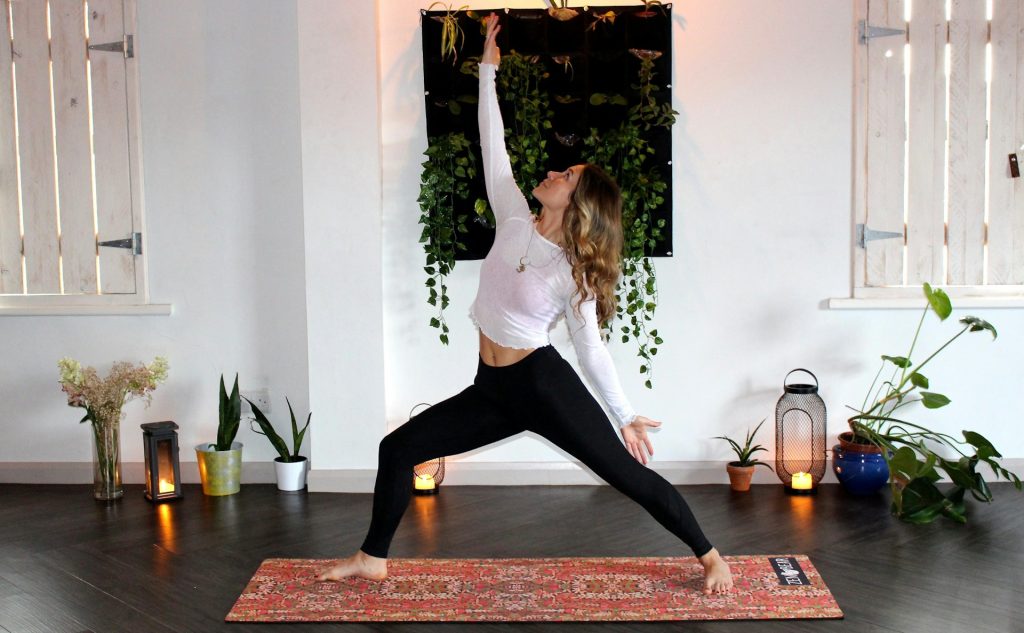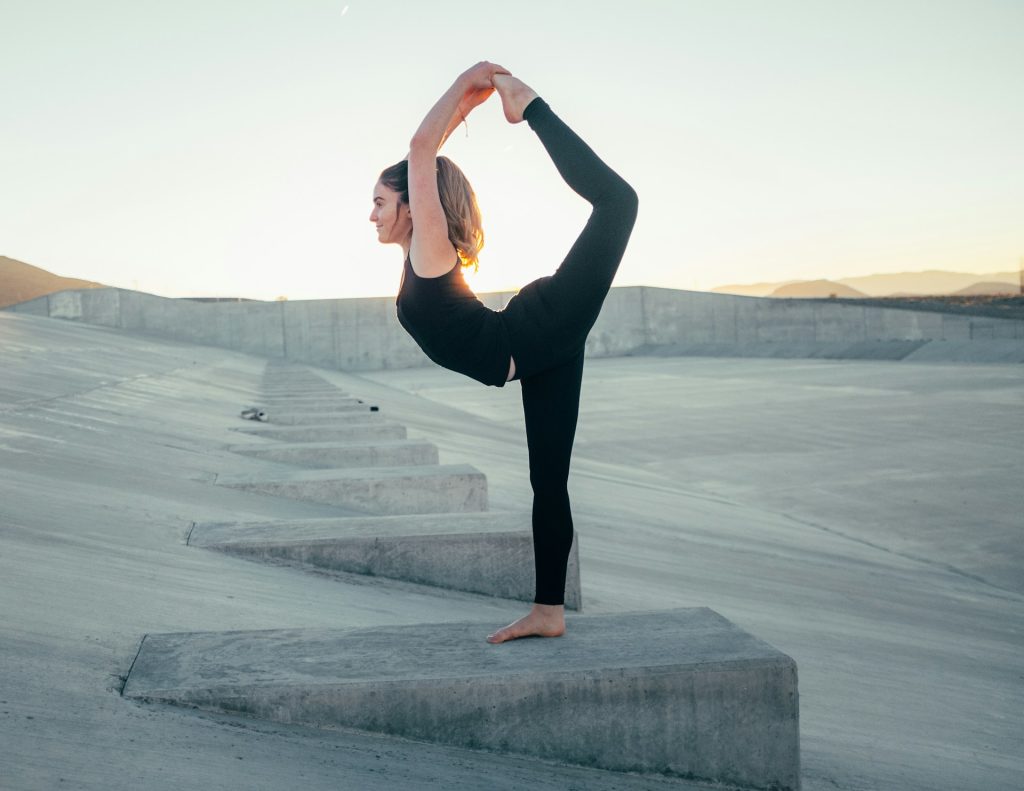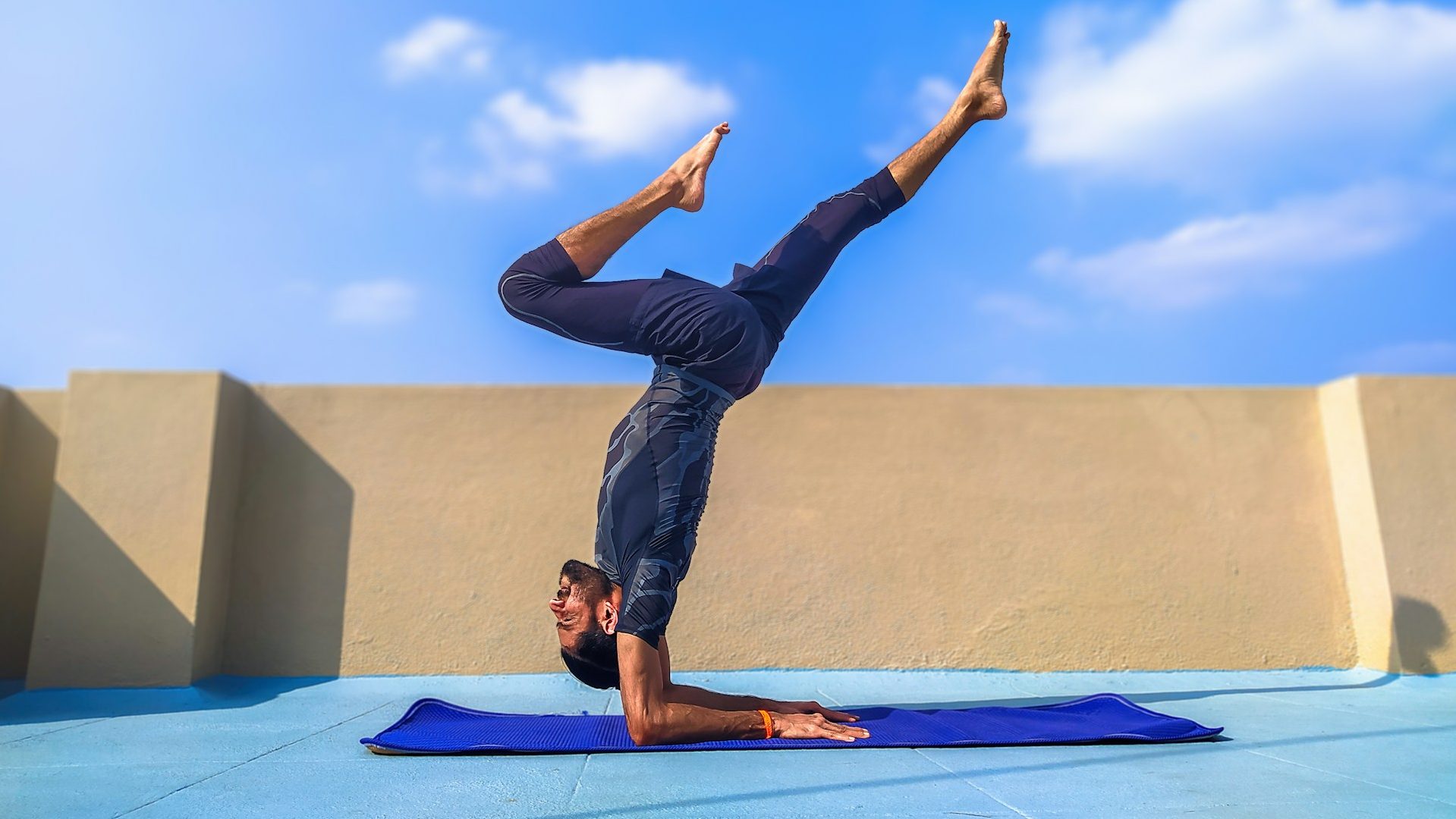Gentle yoga is a style of yoga that prioritizes a nurturing approach, emphasizing breathing and quiet reflection to achieve a harmonious balance between body and mind. This form of yoga is characterized by its capacity to reduce stress levels, engage the parasympathetic nervous system, and assist individuals in falling asleep more easily. Styles such as restorative or yin yoga are integral parts of gentle yoga, each offering unique benefits and focusing on the body’s ability to relax and heal from the inside out.
Often mistaken for a less beneficial practice, gentle yoga can actually offer profound mental, physiological, and spiritual rejuvenation. By calming the nervous system, it allows for better digestion, decreased stress levels, and an enhanced state of relaxation. Whether one has difficulty falling asleep or is seeking a form of exercise that is less taxing on the body, gentle yoga provides a multitude of advantages without the intensity of more vigorous practices.
Understanding Gentle Yoga
Gentle yoga, a variation of the hatha tradition, is designed to be inclusive, addressing the mental, physical, and spiritual needs of all practitioners. By offering therapeutic modifications to common yoga poses, it increases mobility and flexibility through a slow, well-rounded approach, making it an ideal practice for those seeking to improve their well-being without strain.
Defining the Essence of Gentle Yoga
At its core, gentle yoga seeks to nurture and support each individual’s journey toward wellness. Through a series of modified yoga poses, it provides a compassionate and accommodating space for practitioners to explore their capabilities, while enhancing their flexibility and mobility in a thoughtful, measured manner.
Key Distinctions Between Gentle Yoga and Other Forms
Compared to other forms of yoga, gentle yoga stands out for its emphasis on ease and mindful pacing. It eschews the vigorous flows and challenging postures common in more intense styles, instead focusing on yoga poses that promote relaxation and self-awareness, allowing for a deeply personal and restorative practice.

The Health Benefits of Gentle Yoga
The health benefits of gentle yoga are extensive, offering a form of exercise that is accessible and nurturing. As a style of yoga, it activates the parasympathetic nervous system, leading to reduced stress levels and improved relaxation. Particularly beneficial for those struggling with falling asleep, gentle yoga, including restorative or yin practices, serves as a pathway to rejuvenation for both the body and mind.
Stress Reduction Through Gentle Movement
With its emphasis on stretching and maintaining yoga postures at a comfortable pace, gentle yoga effectively reduces stress and promotes tranquility. This hatha yoga practice allows individuals to move with intention and care, reaping the benefits of yoga without overwhelming the body or mind. As a practice of yoga, it fosters a sense of peace and well-being, making it a valuable tool for stress management.
Enhancing Flexibility and Mobility With Ease
Gentle Yoga gently encourages flexibility and mobility, offering relief to individuals experiencing discomfort or restlessness. Its slow and deliberate movements, often beneficial for those with conditions such as Restless Legs Syndrome, allow for a comfortable progression into greater physical ease and restful sleep.
The Role of Gentle Yoga in Pain Management
As a therapeutic form of exercise, gentle yoga utilizes modified yoga poses to assist in pain relief and recovery. Its gentle approach to movement and posture provides a supportive environment for those with chronic pain or acute injuries, helping to increase flexibility and reduce discomfort.
Who Can Benefit from Gentle Yoga?
Gentle yoga is a style of yoga that offers widespread benefits, including increased flexibility and a strengthened body. Kripalu yoga, among other forms, helps to calm the nervous system and can be particularly advantageous for those seeking the benefits of gentle yoga, regardless of age or fitness level.
Gentle Yoga for Beginners: A Non-Intimidating Entry
For those new to yoga, gentle yoga offers a welcoming introduction. The modifications and careful guidance provided make it an approachable way to start exploring the benefits of yoga without feeling overwhelmed.
Seniors and Gentle Yoga: A Match for Lifelong Wellness
Seniors can find a supportive ally in gentle yoga for maintaining health and vitality. Its focus on mindful movement and breath work caters to their needs, promoting longevity and well-being.
Adapting Gentle Yoga for Individuals With Mobility Concerns
Individuals with mobility concerns can significantly benefit from the adaptable nature of gentle yoga. Customized yoga poses ensure that everyone, regardless of physical limitations, can engage in the practice safely and effectively.
Exploring Gentle Yoga Styles
There are numerous gentle yoga classes available, each with its own pace and style. From the mentally challenging aspects of holding yin yoga postures for extended periods to the nurturing environment of a restorative class, these styles of yoga offer unique experiences that cater to personal preferences and needs.
Restorative Yoga: Deep Relaxation Techniques
Restorative yoga focuses on achieving deep relaxation through floor-based yoga postures supported by props. This physical and mental practice is ideal for releasing tension and fostering a state of calm.
Yin Yoga: Holding Poses for Inner Peace
Yin Yoga emphasizes the importance of holding poses to target the body’s connective tissue, facilitating a deep release and promoting inner peace.
Somatic Yoga: Reconnecting Mind and Body
Somatic Yoga presents a unique approach to healing by emphasizing the release of deep-seated samskaras, or habitual patterns, that cause tension and restrict movement. Through slow, intentional exercises, practitioners engage in a re-education of the nervous system, allowing for a deeper connection between mind and body. This mindful practice is particularly beneficial for those looking to overcome the effects of stress, trauma, or chronic pain by promoting relaxation and restoring the body’s natural movement.
Chair Yoga: Accessibility for Everyone
Chair Yoga offers a form of gentle yoga that is inclusive and adaptable, making it suitable for individuals with limited mobility, seniors, or those who simply seek additional support. Utilizing a chair for stability, participants can safely perform various yoga postures, ensuring that the benefits of yoga are accessible to all. By adapting traditional poses to be performed with a chair, this practice emphasizes both the physical and mental wellness achievable through yoga, regardless of one’s physical condition.

Starting Your Gentle Yoga Journey
Embarking on a gentle yoga journey marks the beginning of a path to holistic well-being, tailored to meet the needs of each individual’s body and mind. This form of yoga, based on the hatha tradition, focuses on therapeutic modifications to traditional poses, ensuring a slow and well-rounded approach to increasing flexibility and mobility. It serves as an accessible entry point for those seeking a practice that nurtures mental, physical, and spiritual health.
1. Cat-Cow Pose (Bitilasana Marjaryasana)
The Cat-Cow Pose, or Bitilasana Marjaryasana, is an essential component of gentle yoga, offering a fluid motion that stretches the spine and prepares the body for further movement. This pose involves a gentle rocking between arching the back and rounding it, synchronized with the breath, which helps to enhance spinal flexibility and stimulate the abdominal organs, bringing balance and harmony to the practitioner’s routine.
2. Supported Bridge Pose (Setu Bandha Sarvangasana)
In the Supported Bridge Pose, or Setu Bandha Sarvangasana, a bolster or block is used to offer support, allowing the back and hips to gently open without strain. This restorative variation not only strengthens the legs and improves circulation but also serves as a mild inversion, which can help to relieve stress and fatigue. The support ensures that the pose is held comfortably, promoting relaxation and a sense of well-being.
3. Legs Up the Wall Pose (Viparita Karani)
The Legs Up the Wall Pose, or Viparita Karani, is a restorative posture where the legs are elevated against a wall, allowing gravity to aid in relaxation. This gentle inversion offers numerous benefits, including decreased swelling in the legs, reduced back tension, and a calmative effect on the nervous system. It’s an ideal pose for winding down and is often used to relieve symptoms of stress and insomnia.
4. Supine Twist (Supta Matsyendrasana)
In Supine Twist, or Supta Matsyendrasana, practitioners lie on their backs and gently rotate their spines, which stretches the back muscles and realigns the spine. This pose can be modified for all levels, making it a versatile addition to any gentle yoga practice. The twisting motion aids in digestion, detoxifies the body, and encourages a sense of rejuvenation and balance within the body’s internal systems.
5. Child’s Pose (Balasana)
Child’s Pose, or Balasana, is a grounding posture that represents the epitome of surrender and relaxation in gentle yoga. Kneeling with the forehead resting on the ground and arms extended or alongside the body, this pose offers a deep stretch to the hips, thighs, and ankles while calming the mind and relieving stress. It’s often used as a resting pose throughout a yoga sequence or as a gentle stretch on its own.
Creating a Calming Gentle Yoga Environment at Home
To practice gentle yoga at home, create a serene space with minimal distractions. Soft lighting, comfortable floor cushions, and a quiet atmosphere enhance focus and relaxation. Incorporating elements such as plants or soothing colors can also promote a tranquil environment conducive to gentle yoga’s slow, therapeutic approach.
Complementing Gentle Yoga With Healthy Practices
Nutritional Considerations for Yoga Practitioners
Nutrition plays a vital role in supporting a gentle yoga practice. A balanced diet rich in whole foods provides the energy and nutrients the body needs to perform poses and maintain focus. Yoga practitioners are encouraged to listen to their bodies and nourish themselves mindfully to support their physical and spiritual journey.
The Importance of Breathwork in Gentle Yoga
Breathwork is fundamental to gentle yoga, as it bridges the body and mind, enhancing the meditative aspect of the practice. Proper breathing techniques can deepen relaxation, increase oxygen flow, and help practitioners maintain presence and mindfulness throughout their gentle yoga routine.
Integrating Mindfulness and Meditation With Gentle Yoga
Combining mindfulness and meditation with gentle yoga enriches the practice by encouraging a deeper connection with the present moment. This integration fosters a meditative state where mental clarity and calmness are cultivated, enhancing the therapeutic effects of the gentle yoga experience.
Learning and Growth Beyond the Mat
Gain Insights From Yoga Literature and Resources
Exploring yoga literature and resources is an excellent way to expand knowledge and gain insights into the practice of gentle yoga. Books, articles, and online content can offer valuable information on philosophy, pose modifications, and sequences that align with the gentle approach to yoga.
Connecting With the Gentle Yoga Community
Joining a gentle yoga community offers support, shared experiences, and a sense of belonging. Whether online or in-person, these connections can inspire practice, provide encouragement, and foster the exchange of ideas and techniques that enhance the gentle yoga journey.
Continuing Education: Workshops and Retreats for Gentle Yoga
Participating in workshops and retreats dedicated to gentle yoga can be transformative. These experiences provide immersive learning opportunities, expert guidance, and the chance to deepen one’s practice in a nurturing environment, surrounded by like-minded individuals.
Real Stories from Gentle Yoga Enthusiasts
Personal Transformations Through Gentle Yoga
Gentle yoga often leads to personal transformations that extend beyond physical health. Practitioners frequently report improved mental clarity, reduced stress, and a greater sense of inner peace, illustrating the holistic benefits of this nurturing and therapeutic form of yoga.
Testimonials: How Gentle Yoga Changed Lives
Testimonials from individuals who practice gentle yoga provide powerful accounts of its life-changing effects. These stories of enhanced mobility, pain relief, and emotional well-being inspire others to explore gentle yoga as a path to holistic health and wellness.
Cultivating a Regular Gentle Yoga Practice
Setting Intentions for a Sustainable Yoga Journey
Setting clear intentions is essential for a sustainable gentle yoga journey. Intentions guide the practice, focusing on personal goals such as improving flexibility, reducing stress, or cultivating mindfulness, and help maintain motivation and dedication to the practice.
Tracking Your Progress With a Yoga Journal
Maintaining a yoga journal allows practitioners to track their progress, reflect on their experiences, and observe the evolution of their practice. This habit can be a source of motivation and insight, highlighting milestones and areas for growth in the gentle yoga journey.
Overcoming Common Obstacles in Yoga Practice
Embarking on a yoga journey may present hurdles such as time constraints, physical limitations, or self-doubt. Overcoming these requires patience, modification, and commitment. Integrating poses like a modified downward facing dog can help build confidence and adaptability. Focusing on progress rather than perfection paves the way for a fulfilling practice that accommodates personal needs and goals.

Embracing the Gentle Path to Wellness
The Intersection of Gentle Yoga and Self-Care
Gentle yoga stands at the crossroads of self-care, offering a therapeutic approach to the hatha yoga tradition. This practice caters to diverse needs, promoting physical, mental, and spiritual well-being. Through a deliberate, slow, and well-rounded methodology, it enhances mobility and flexibility, becoming a cornerstone of a holistic self-care regimen.
Fostering Body Positivity Through Gentle Movement
Gentle yoga cultivates body positivity by encouraging practitioners to engage in less intense positions with a focus on stretching and warm-up movements. This inclusive practice supports individuals across all fitness levels, allowing for modifications that foster a safe and positive relationship with one’s body. Embracing this gentler pace helps to reinforce a positive body image and self-acceptance.
A Final Reflection on Gentle Yoga
The term “gentile yoga” is not merely a label but a philosophy that embodies a holistic approach to well-being. It represents a journey where each individual’s pace is respected and encouraged. As we reflect on the gentle path to wellness, we acknowledge a world where movement is not about the highest intensity but about harmony and self-care. Gentle yoga continues to be a beacon for those seeking a sustainable and nurturing way to enhance their quality of life, inviting all to discover its profound and gentle power.
